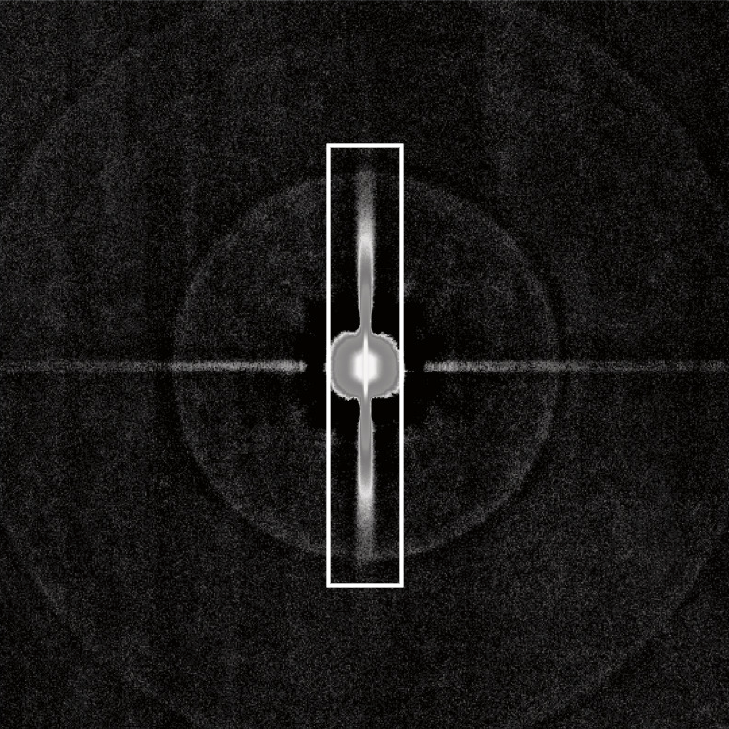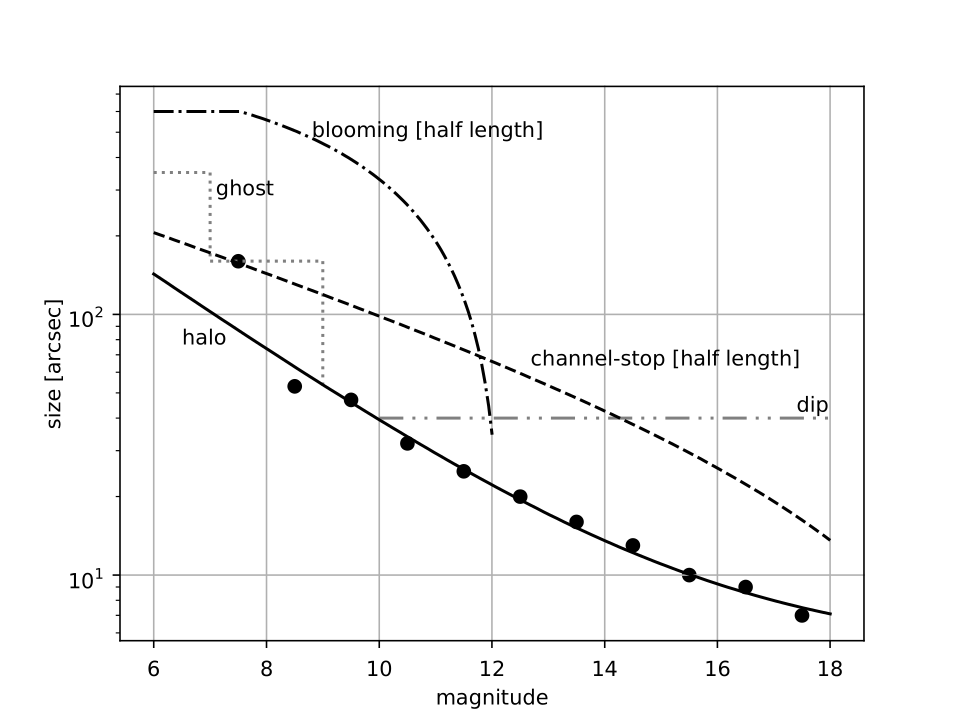There has been a major update in the bright star mask since PDR2. Be sure to read the PDR3 paper before using it!
Artifacts
There are several different types of the optical/detector artifacts, each of which has its own shape and size. We consider the following features:
- halo: A star has an extending smooth halo around it and the halo size depends on the brightness of a star and also on the way we subtract the sky.
- ghost: In addition to halo, a very bright star is surrounded by larger optical ghosts due to reflection inside the camera. As there are multiple paths of reflection, each ghost feature is off the focus by a different amount, and it thus has a different angular size on the focal plane. A ghost feature is roughly constant in surface brightness and it is partly subtracted by the sky subtraction. However, its edge remains clearly on the coadd and we are interested in the outermost edge that affects the object detection.
- blooming: A common CCD feature. When a pixel exceeds its full-well capacity, electrons overflow to adjacent pixels along the column. The maximum length of the blooming feature is set by the detector size, which is 4k in case of HSC.
- channel-stop: At long wavelengths ( ~ 1µm ), a CCD becomes optically thin and a fraction of incident photons go through the silicon layer and get reflected by the circuit on the front, probably by the channel-stop. This causes a diffraction pattern around a bright star perpendicular to the blooming direction. This feature is seen only in the y -band and N B1010 .
- dip: Although we account for object footprint when we estimate the sky background, a portion of a bright star is still subtracted as part of the sky, resulting in slightly negative background around the vicinity of a star. Because of the negative sky, the object detection there is slightly inefficient and the number of detected objects drops. We call this feature a dip.
The figure below illustrates the ghost, blooming and channel-stop features. The left is an image of a 5th magnitude star. The inner and outer circles have 160 and 320 arcsec radii, respectively. These circles correspond to the ghost edges. The horizontal rectangle indicates the blooming feature. The right figure is a stacked y-band image of 5th magnitude stars. The vertical box is the channel-stop feature. The horizontal stripe is blooming and the ghost edges at 160 and 320 arcsec are also clearly seen.
Mask size
The mask size is dependent on the brightness of a star and the figure below summarizes the mask size for each feature. Note that, as the brightness of a star is different for a different filter, the mask size is filter dependent. In the current release, only the broad-band filters are available, and we define the mask for stars brighter than 18mag in each HSC broad-band filter. For narrow-bands, one can use a broad-band filter that is closest in wavelength (e.g., y-band is a good proxy for NB1010).
Caveat
The dip mask introduces a significant loss in the survey area; about 80% of the Wide area is left after applying the halo, ghost, and blooimng masks, and the fraction reduces to 50% when the dip mask is additionally applied. If one does not care about a ~ 10% detection loss around the detection limit around bright stars, the dip mask can be ignored.


